Compared to last week, western Canadian yearling prices traded $3-$5 on either side of unchanged. Auction market volumes are growing in Saskatchewan and Manitoba; however, central Alberta prices held a definite premium of $8-$10 over the eastern Prairie regions. Ontario orders are starting to surface in Manitoba but prices were out of reach with Alberta […] Read more

Klassen: Feeder market experiences mixed tone
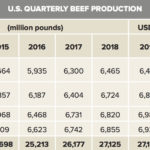
Cattle market fundamentals in a transition stage
Market Update with Jerry Klassen: The market is telling producers to sell yearlings now
Alberta fed cattle prices hovered in the range of $145 to $148 throughout July. Steady domestic and export demand sustained the market at the current levels despite the burdensome supply. In the previous issue, our market outlook for fed cattle was for stable prices during the summer. We also mentioned that the market would make a seasonal […] Read more

Klassen: Feeder cattle market recovers
Compared to last week, western Canadian yearling markets traded $4-$6 higher on average; some packages in Alberta sold $8 to as much as $10 above week-ago levels. Larger feedlot operations were very aggressive on 750- to 900-pounders. The quality of yearlings is excellent at this time of year. Comments from the front row suggest most […] Read more
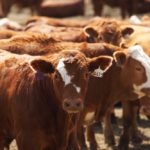
Klassen: Feeder cattle falter under fed cattle uncertainty
Compared to last week, western Canadian yearling prices were down $2-$4 on average. The feeder cattle market was hard to define due to limited volumes; however, prices were down $2 to as much as $6 in some cases. The Aug. 9 fire at a Tyson packing plant near Holcomb, Kansas set a negative tone for […] Read more
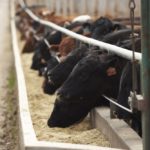
Klassen: Feeder prices ratchet higher
Compared to last week, western Canadian yearling markets traded $3-$5 higher on average; however, there were a few feature sales quoted $8 to as much as $10 above week-ago levels. Finishing feedlots were fairly aggressive on backgrounded cattle, which was the main source of yearlings last week. Early grassers are starting to come on the […] Read more

Klassen: Feeder cattle markets remain firm
Western Canadian feeder cattle prices were unchanged from seven days earlier. Strong buying interest was noted from finishing feedlots in Alberta. Orders flowed across the prairies keeping prices relatively even. U.S. feeder cattle markets traded $3 to as much as $8 higher in the Northern Plains which also underpinned prices in Saskatchewan and Manitoba. There […] Read more
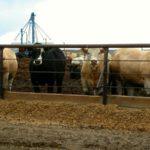
Volatile ride ahead for cattle complex
Market Update: Late October may be the best window to sell calves
The Alberta fed cattle market has been trending lower over the past two months as the market functions to encourage demand. In the previous issue, we explained that the beef market is characterized by an inelastic demand curve. Therefore, a small change in supplies can have a large influence on the price. Monthly beef production increased from March through June. […] Read more
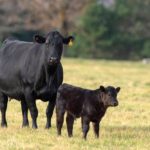
Klassen: Yearling prices surge
Compared to last week, Western Canadian yearling prices were $3 to as much as $10 higher while calves traded $2 to $5 above week-ago levels. Most auction barns remain in holiday mode; however, order buyers were extremely busy fielding calls for available cattle. This caused the yearling market in Western Canada to divorce from the […] Read more

Klassen: Feeder market experiences fortuitous bounce
Compared to last week, western Canadian feeder cattle markets traded $2-$5 higher on average. Auction barns had limited numbers on offer but strong buying interest surfaced for quality packages. Alberta feedlots were the main buyers setting the price structure. There were two main factors enhancing demand this week. First, U.S. packers started to show some […] Read more

Klassen: Feeder market softens on limited volumes
Compared to last week, western Canadian feeder cattle prices were steady to $3 lower on average. Many auction barns were on holidays last week. Auctions that did hold sales had limited numbers on offer. The feeder market remains under pressure due to negative feeding margins, firm feed grain values and weakness in deferred live cattle […] Read more


